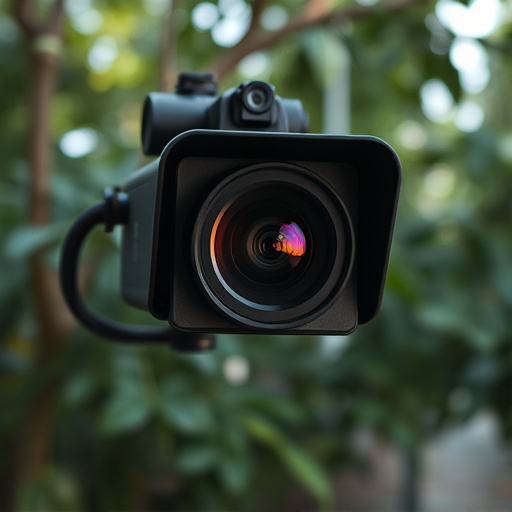TL;DR:
When conducting counter surveillance sweeps, security professionals use advanced tools like heat signature tech, UV lights, thermal imaging cameras, and metal detectors to identify concealed cameras for front doors. They scan door frames, handles, and surrounding areas for thermal anomalies, subtle markings, unusual heat signatures, or metallic objects. Post-sweep procedures include documenting findings, enhancing physical security with locks, lighting, and surveillance systems, regularly updating protocols, training staff, fostering vigilance, and strengthening cybersecurity to mitigate digital threats targeting front doors.
Counter surveillance sweep is a crucial skill in today’s digital age, where hidden cameras can pose significant threats. This professional guide delves into identifying concealed cameras around your front door, using advanced tools and techniques for detection, and offers post-sweep procedures to enhance security. Learn effective methods to protect your privacy by understanding the tactics behind detecting and neutralizing these covert devices, focusing specifically on concealed cameras for front doors.
- Identifying Concealed Cameras Around the Front Door
- Professional Tools and Techniques for Detection
- Post-Sweep Procedures and Security Recommendations
Identifying Concealed Cameras Around the Front Door
When conducting a counter surveillance sweep, one of the critical areas to focus on is identifying concealed cameras around the front door. These hidden devices are often employed by intruders to monitor activity and gather sensitive information before attempting entry. Professionals use a combination of advanced tools and meticulous techniques to detect these cameras. One common method involves utilizing heat signature technology, which can uncover infrared emitters commonly used in covert cameras. By scanning the exterior of the door and its surroundings, security experts can pinpoint thermal anomalies indicative of hidden camera components.
Additionally, professionals may employ visual inspection using specialized equipment such as UV lights or magnifying glasses. These tools help reveal hard-to-spot markers left by cameras, including adhesive residues or subtle markings on surfaces. By thoroughly examining the front door’s frame, handle, and adjacent areas, it becomes possible to identify any concealed cameras designed to monitor access points, thereby enhancing security measures against potential breaches.
Professional Tools and Techniques for Detection
Professionals in counter surveillance sweeps rely on a combination of advanced tools and techniques to detect even the most concealed cameras. One critical area of focus is the front door, where hidden cameras can be easily placed by potential intruders. Specialised equipment such as thermal imaging cameras, which can identify heat signatures of devices, are invaluable assets. These tools allow experts to scan for unusual temperature variations that could indicate the presence of hidden cameras, like those strategically positioned on or around the front door.
Additionally, long-range audio detectors and advanced metal detectors are employed to pick up on faint signals or unusual metallic objects. By combining these methods, professionals can thoroughly assess a property, ensuring that concealed cameras, often placed in seemingly innocent household items or decorations near the entrance, are identified and neutralised.
Post-Sweep Procedures and Security Recommendations
After conducting a comprehensive counter surveillance sweep, several crucial post-sweep procedures and security recommendations should be followed to ensure maximum protection. Begin by thoroughly documenting all findings from the sweep, including locations of any concealed cameras for front doors or other devices. This detailed record will serve as a valuable reference for future inspections and can aid in identifying potential new threats.
Next, implement enhanced physical security measures across your property. Consider adding additional security hardware like advanced door locks, motion-activated lighting, and exterior surveillance systems. Regularly update security protocols, conduct staff training sessions on awareness of hidden cameras and other surveillance devices, and foster a culture of vigilance to deter potential intruders. Additionally, review and strengthen existing cybersecurity practices to protect against digital threats, with special attention given to securing internet-connected devices and networks.
In conclusion, a thorough counter surveillance sweep, focusing on identifying concealed cameras around the front door, involves a combination of professional tools and techniques. By implementing the methods outlined in this guide, you can significantly enhance your home or business’s security against potential hidden camera threats. Remember that proactive measures and regular post-sweep procedures are essential to maintaining a secure environment, ensuring peace of mind in today’s digital age where concealed cameras for front doors may be more subtle and advanced than ever before.
